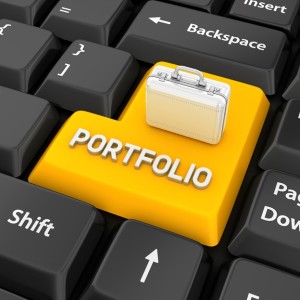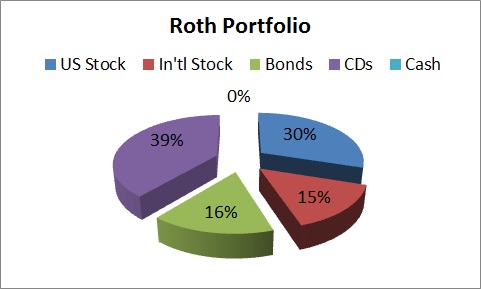AARP Hearing Center
Financial Adviser Exposes Own Portfolio
By Allan Roth, June 15, 2015 04:55 PM

People are often surprised when I describe my personal portfolio to them. Using an analyzing tool from Chicago-based Morningstar, I’ve put together a brief description of my own daringly dull portfolio and, far more important, why it looks like it does.
Most of my investments are in mutual funds with an average expense ratio of 0.16 percent annually. I don’t have enough money to diversify by buying individual stocks, so I buy low-cost index funds that track the overall market. For every $1,000 invested, I pay $1.60 per year in fees. Morningstar states that the average portfolio similar to mine has an expense ratio of 1.07 percent, or costs $10.70 for every $1,000 invested. Fees matter greatly and I work to keep fees dirt-low. Unfortunately, some funds I bought decades ago have higher fees, but I’d have to pay taxes on gains to get out.
Get the latest tips on protecting your money and saving for retirement — AARP Money newsletter »
Roughly 45 percent of the portfolio is in the stock market and 55 percent is in fixed income and cash. Though this strikes people as very conservative, my wife and I, at age 58 for both of us, live frugally. And after decades of what I call dull investing, our need to take risk is now very low. I don’t buy risk profile questionnaires I’ve taken that recommend I have between 70 percent and 90 percent in stocks. It’s the conservative allocation that allowed me the courage to rebalance and buy more stocks after the stock market plunged in 2008. Research demonstrates that both individuals and advisers typically chase performance by buying high and selling low, underperforming the funds themselves by nearly 2.5 percentage points annually on average.

The 45 percent in stocks is roughly two-thirds in U.S. stocks and one-third in international stocks. I’m a believer in global capitalism. Roughly half the value of all global stocks is based in the U.S. and half outside. I overweight U.S. stocks because I live in the U.S. and most goods and nearly all services I buy originate in the U.S., so I choose to overweight my home currency. There is, however, an argument to weight the stocks according to the global value of stocks.
Of the fixed income, roughly 70 percent is in certificates of deposit and virtually none is in cash or money market funds. I’ve written for over a decade about going directly to banks and credit unions to buy FDIC- and NCUA-insured certificates of deposits that pay more than high-quality U.S. government bonds and offer minimal early withdrawal penalties. If rates do rise significantly, I pay the withdrawal penalty, typically amounting to 1.12 percent or less, and reinvest the funds at the higher rate. Because the penalty is so low, I consider this “near cash” so I minimize the actual cash I need in order to earn more. The remaining amounts are in low-cost bond funds with nearly all high-quality investment-grade funds. I own some corporate bonds in my funds but most are backed by the U.S. government. I want my fixed income to be the shock absorber of my portfolio the next time stocks tank.
Get discounts on insurance and banking services with your AARP Member Advantages. »
The portfolio is structured for tax efficiency. I have my stock funds in my taxable accounts, and my tax-deferred IRAs are mostly in CDs and bond funds, as well as some REITs, or real estate investment trusts. That asset location maximizes returns after taxes since stock index funds are very tax-efficient. Meanwhile, income from CDs, bonds and REITs, which is taxed at higher rates as ordinary income, is sheltered from taxes inside my IRA. In order to diversify against possible changes in tax rates and tax laws, I do conversions to Roth IRAs annually, which means I pay taxes now for the promise of tax-free growth later.
Summing it up
Though my portfolio is not exciting, I believe it was the decades of dullness, combined with relatively frugal living, that allowed my family to achieve financial independence. By being frugal, one can be rich with less money. I’ve even used a similar low-cost diversified strategy to fund my 17-year old son’s college education using the Utah 529 plan of index funds.
I tell my clients that I hope they have an exciting life, as long as they don’t get it from their investment portfolios.
Photo: Pagadesign/iStock
Also of Interest
- 3 Reasons to Consider a ‘Robo-Adviser’
- BMI Calculator: How Healthy Is Your Weight?
- Get Involved: Learn How You Can Give Back
- Join AARP: savings, resources and news for your well-being
See the AARP home page for deals, savings tips, trivia and more.































































